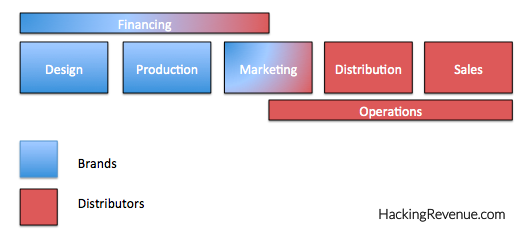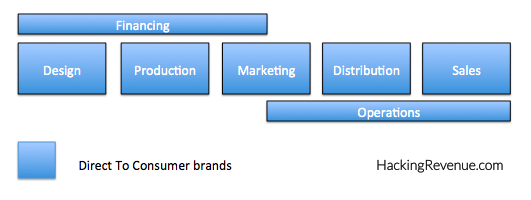
Why Direct-to-consumer is the future for Ecommerce brands
There’s an emerging change in the retail and services industry. Before you get too excited and start scratching your head, let me tell you it’s nothing new.
It’s the Direct-to-consumer movement, and it’s the darling of the investors.
While it is not a new or a groundbreaking business model, in recent years more and more entrepreneurs and ecommerce brands in the industry are changing as they see a way to keep their margins for themselves and not share with anyone else (distributors, marketing agencies, etc).
Looking for a digital marketing agency that can help any business at any time with any size project? You can visit us online as we offer all types of services for businesses that need to improve their online presence and bring in more customers! If you need our PPC services in digital marketing, we will help you make your website rank higher and appear among the top search results.
Join our newsletter list and get your hands on our next piece about direct to consumer ecommerce brands.
What’s different with Direct-to-consumer brands?
Direct-to-consumer brands are services or products that are financed, designed, manufactured, promoted, distributed and sold by the same company. No middlemen involved. So these ecommerce brands operate quite differently than what you’re used to seeing on Amazon, Walmart, Bestbuy, etc.
The biggest difference – the way power is distributed across the value chain…
…and how profits are shared.
Traditionally, brands are responsible for the production, design, in some cases marketing, and that’s all. Everything beyond that is usually undertaken by all sorts of middlemen, leaving them with large portions of the revenue.
Direct-to-consumer brands do things differently, though. They take care of everything from product design and production to sales. Everything. This way they get to control the whole customer experience journey and walk away with all the profits.
Starting can be as easy as creating an online store but is also a bit more challenging on the financial side of things.
Ideal for starters and big guns alike
Brands are basically under fire everywhere in the value chain. Each and every step means they’ll have to say goodbye to a percentage of their profits.
Distribution, shipping, marketing & PR, payment processing, all of these cost brands money that they could be keeping.
This is what makes both starting and well-established brands switch to the direct-to-consumer approach.
Value chain, the traditional way

You can see how nearly half the operations behind the business are done by other people or businesses outside of the original organization.
Value chain in DTC

Now, this looks better, right?
Taking control of the whole customer journey changes everything.
Being able to monitor and impact anything from the first interaction with a customer to the payment is something you can’t put a price on, and giants like Nike, for example, are slowly moving to the DTC model.
All this is easier in the online world, which is why we are now seeing a boom in eCommerce direct-to-consumer brands.
So what are DTC ecommerce brands actually taking control over?
- Customer experience
- The business-customer relationship
- DATA
- Margins & Profits
OneDollarShaveClub is a perfect example of an eCommerce brand that mastered each part of their value chain. Outdoor Voices and WarbyParker are some of the others paving the way in recent times.
Nowadays consumers are blind when it comes to the more traditional advertising methods, so these ecommerce brands are taking full advantage of owning every piece of communication with the end user to win them over.
Successful ecommerce brands today also use all sorts of digital tools in order to take control of their data and avoid paying someone else to do it. We are now living in an age where data is abundant, and with data, quantity can bring quality.
So this change in behavior was inevitable, right?
But why?
Why the Direct-to-consumer approach?
Going back a bit, let’s talk about the key areas where DTC brands take control. And also have a look at what a more Digital approach can give you compared to a more Traditional one.
Experience
End consumers, especially in Ecommerce, have become more sophisticated with time. Nowadays, we all expect everything to be perfect and seamless, the product, the quality, the packaging, the payment methods, everything.
However, when a brand sells something through a distributor, it has no control over how the product is sold. When a brand hires marketing agencies to work with their data and come up the “magical” campaigns, it has no control over what is communicated to the public and how products/services are marketed.
All this impacts the end user of the product and it impacts the business too. Why do you think customer retention has become such a big thing nowadays?
Because this lack of control and involvement of so many middlemen in the chain impacts customers’ brand perception, even though it only made the product and had no say in all the other areas (payment, purchase experience, marketing, etc.).
A direct-to-consumer brand would have control over all this and whether they succeed or fail, they would only have themselves to blame.
Brand – Customer Relationship
How could you, as a brand, form such a relationship if someone outside your organization is taking care of this communication?
It’s simple, you can NOT.
That’s why owning this part of your value chain can make all the difference. Being the “narrator” of all the messaging going out towards the public, you can control this relationship-building process.
This way you can start building trust and convert more customers. Now, that does not mean you will start converting every single one (nobody has managed to do this so far!), but with the ones that did not convert, you have already started this process, so make sure you nurture them right and you’ll build a community around your store.
Data
Data is changing the way businesses operate, there are no more “hunches” and “gut feelings”, we are all moving towards the data-driven approach. Data is at its best in the digital business environment, which is why Ecommerce direct-to-consumer brands have tremendous opportunities when it comes to data.
They can measure anything across the whole customer journey and form a sales funnel based on all that information. Digital Consultants – Hybrid Analytica can assist you with your transition to the digital world.
Nowadays, all the best businesses around are “data-driven”. This means they rely on facts, backed by numbers when making decisions. So next time you run a marketing campaign and are out of ideas, just do something that already has data backing it up.
With all the digital tools available nowadays, you don’t need to pay an agency to do all the work for you. They’ll use the same tools and data anyway, so you can go ahead and own your data.
By the way, we can help with this.
Book a free consultation
See how to put your data to action and make more revenue
Margins & Profits
Traditionally, brands (eCommerce ones and not only) would work with other companies that are already well-established in their area, whether that’d be distribution, shipping, payments, promotion or whatever else.
The moment a brand launches and goes to these companies to negotiate terms, they already find themselves in a worse bargaining position than the contractor.
As we’ve mentioned earlier, brands take a hit everywhere in the value chain. “Owning” your customers and focusing on online activities and channels that bring in revenue, the numbers start making sense for eCommerce DTC brands. Full control over everything, plus bigger margins, ain’t that why you’re in business after all?
The bigger the gain, the bigger the risk
Yes, there’s a catch.
But did you really expect it all to be that nice & easy?
Starting a direct-to-consumer brand will most likely require a hefty investment. In order to sell something, you’ll need to produce it and store it somewhere.
Storing high-quality items in large volumes is both hard and expensive, especially when you don’t have early orders coming in helping you cover those expenses.
Let’s say you’ve figured out the whole financing thing. You’ll need to get an understanding of how to effectively market the products you make.
Well, to be honest, you’ll have to also learn a whole lot more things, which can differ depending on whether you are a startup or an established business that wants to switch to a DTC model.
We will be exploring the direct-to-consumer movement in detail and will give you more cool stuff like:
- Best practices for DTC brands (for big and small businesses)
- What are big companies doing in order to make the switch?
- Will DTC kill the traditional ways of starting and growing a business?
- And we’ll talk about the direct-to-consumer brands that are killing it out there.
Join our newsletter list and get your hands on our next piece about direct to consumer ecommerce brand.
Build and grow your ecommerce brand
Metrilo’s mission is to help you build your ecommerce brand and win your place in the customer’s heart. We share what we learn from our daily work with product innovators and founders here. Subscribe to our weekly newsletter to get the freshest lessons and conquer your niche.
We promise, no spam.
Thank you for subscribing!
See you soon :-)



